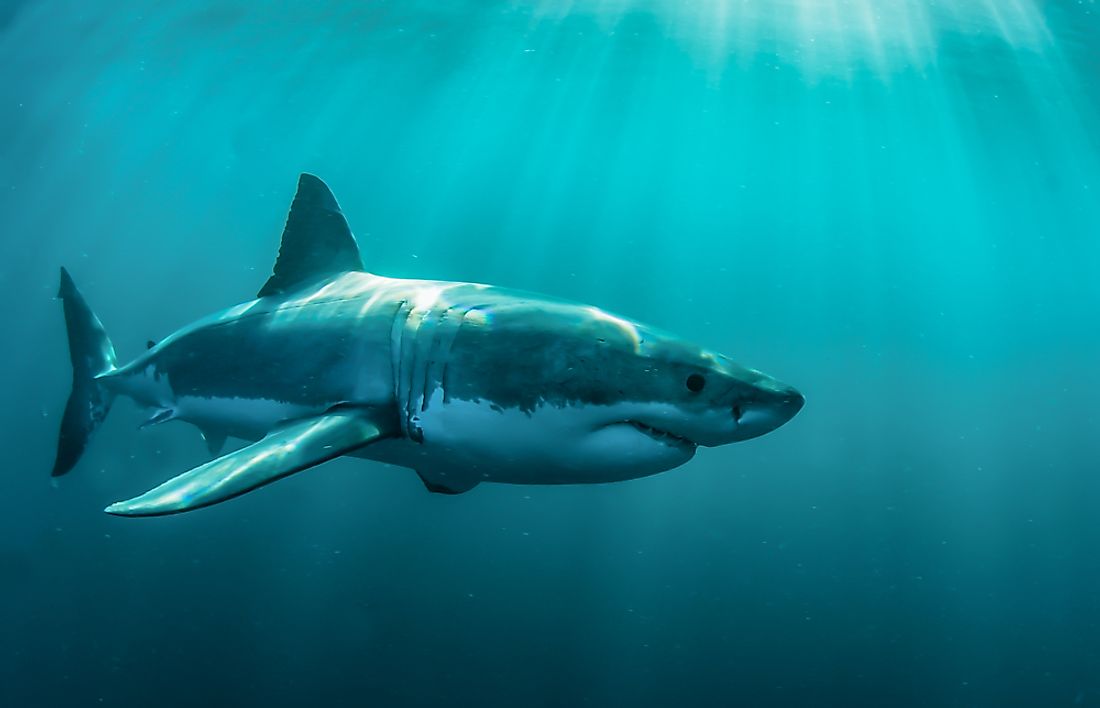How Fast Do Sharks Really Swim?

Sharks spend most of their time slowly cruising around the seas, usually at a speed of 1.5 miles per hour to conserve energy. The whale shark swims at a speed of 3 miles per hour. However, sharks can also be surprisingly fast, with some species being capable of attaining speeds of 42 miles per hour. Some species are so fast that they are believed to swallow their prey whole, tail-first, indicating to have swallowed the prey while pursuing it. The fastest sharks in the world are all predatory sharks and rely on speed to hunt their prey. Two of the fastest shark species is the shortfin mako sharks and great white sharks.
The Fastest Sharks in the World
The Shortfin Mako Shark
The world’s fastest shark is the bonito shark. Commonly known as the shortfin mako shark, the shark has been observed to reach speeds of up to 42 miles per hour. The shark is a large shark species, with adult females reaching 10 feet in length and weighing an average of 298 pounds, but large mako sharks have been captured weighing as much as 1,300 pounds. Like many fast sharks, the shortfin mako shark’s body is streamlined which has the shape of a torpedo. New Zealand-based researchers have observed a young shortfin mako shark moving from 0 to 100 feet in just two seconds, which translates to a speed of 50 feet per second. The shark’s extraordinary speed enables it to hunt some of the ocean’s fastest fish including the swordfish and the sailfish.
The Great White Shark
The Great White Shark is best known for its immense size as it is the world’s largest predatory fish. However, despite its great size, the shark is among the fastest fish in the ocean, with adults reaching speeds of 25 miles per hour. The shark has also been observed clocking 35 miles per hour on short bursts. The shark’s streamlined body is designed for speed, with a pointed snout to counter drag. The large shark is also surprisingly agile with its large dorsal and pectoral fins allowing it to achieve maneuverability. The powerful caudal fin provides thrust to the great white shark, enabling the large shark to breach when making ambush hunts. Some individuals have been witnessed leaping 25 feet above the water surface.
Biological Adaptations
Several biological adaptations allow sharks to attain such incredible speeds. First of these adaptations is seen in the body shape of the sharks. All sharks have a streamlined body characterized by a pointed snout to reduce drag when swimming. The rocket-shaped body is powered by a large caudal fin that gives the shark propulsion. Large pectoral and dorsal fins seen in sharks are excellent for agility. The muscular body of sharks is another feature that allows them to be among the fastest of all fish. A common characteristic seen in the fastest sharks in the oceans is endothermic heat regulation, with the fastest sharks being warm-blooded. Having the ability to self-regulate their body temperature allows the sharks to fill their muscles with warm blood rich in oxygen and cruise at tremendous speeds even in oceans with freezing waters.











